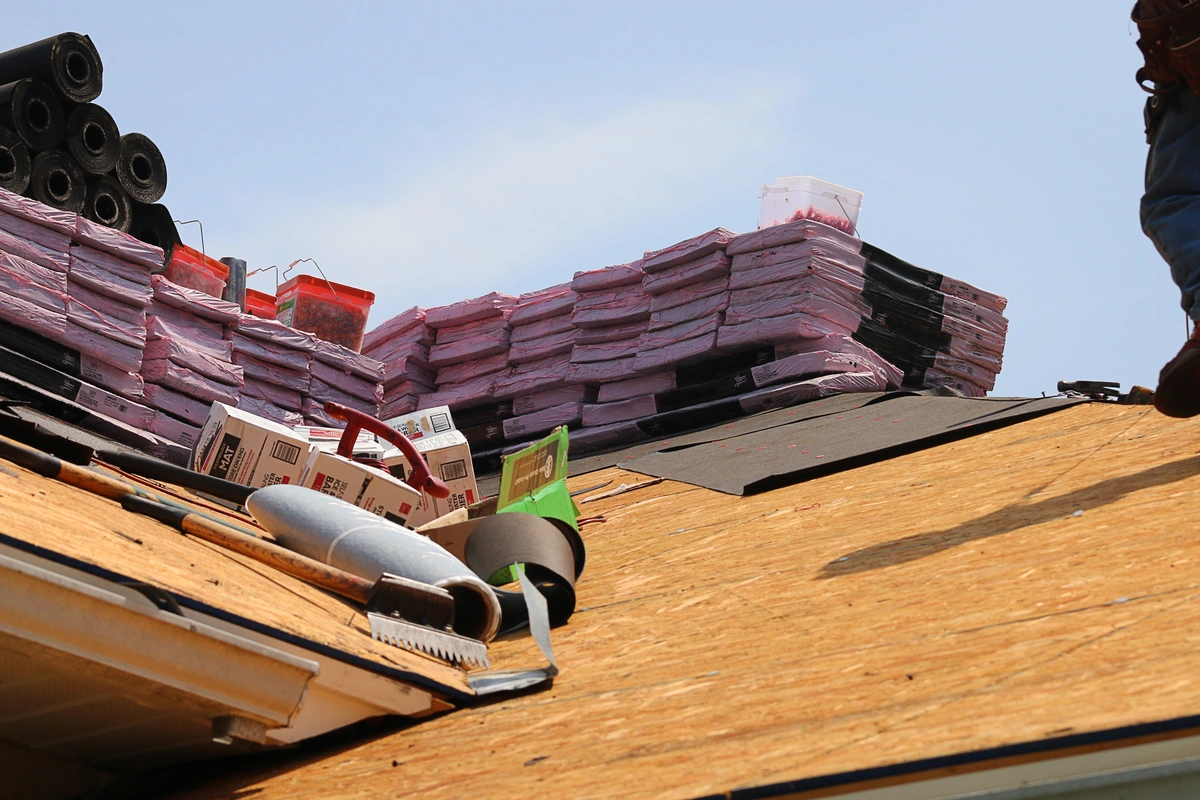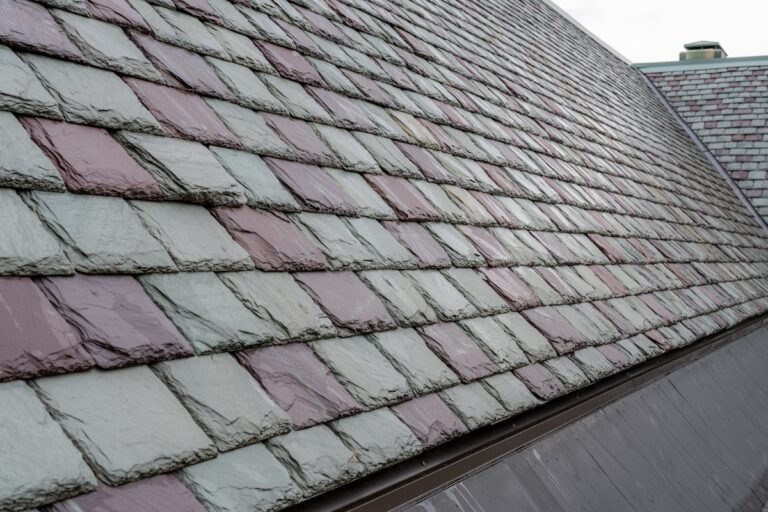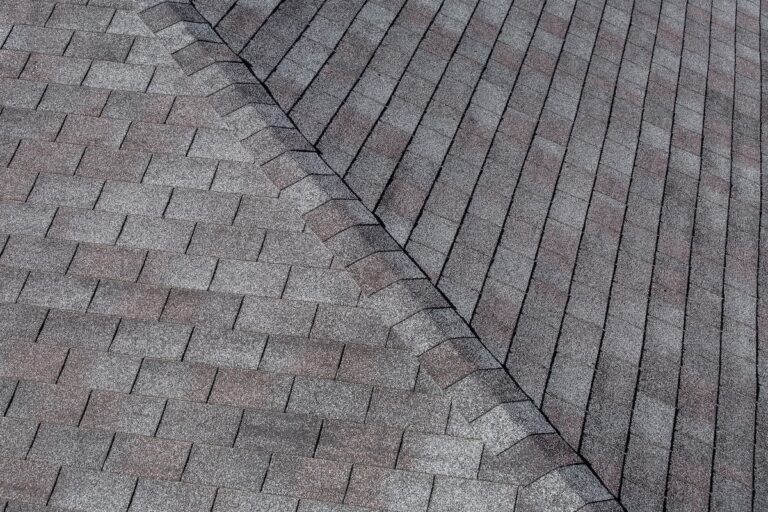When it comes to protecting your roof, roof sheathing plays a critical role. It serves as a foundational layer that supports your roofing material and provides a barrier against weather conditions.
Whether you’re building a new home or considering a roof replacement, understanding the ins and outs of roof sheathing can help you make informed decisions. Today’s guide, will cover everything you need to know about roof sheathing, from:
- Materials
- Installation information
- Maintenance tips
- Common issues
What is Roof Sheathing?
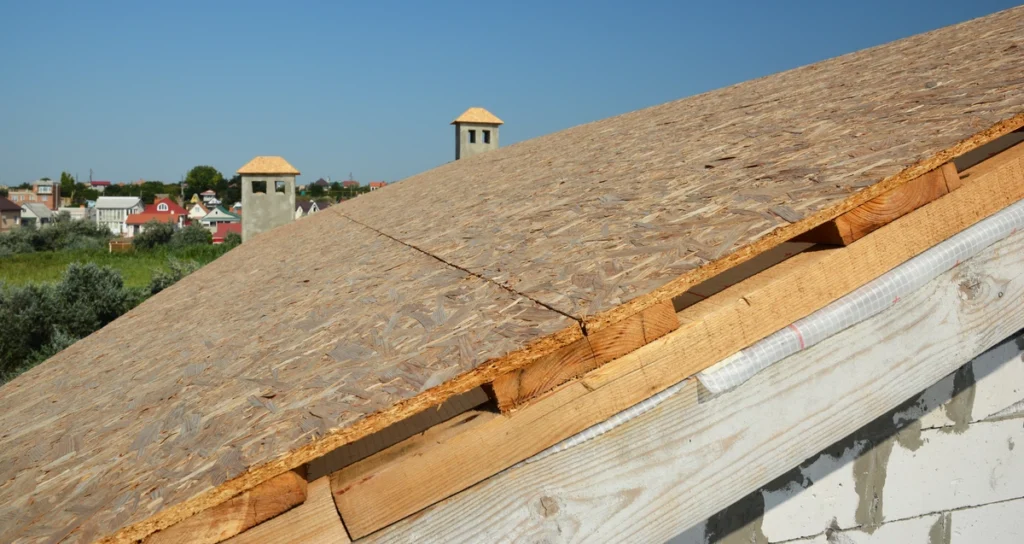
Roof sheathing, also known as roof decking, is the layer of material installed between the roof’s structural components and the roof covering (like shingles or tiles). It provides a surface for attaching the roofing material, adds structural support, and helps distribute weight evenly across the roof.
👍 Benefits of Roof Sheathing
- Structural Support: Roof sheathing adds rigidity to the roof frame, helping to stabilize the entire structure.
- Weather Protection: It acts as a barrier against wind, rain, snow, and other weather conditions.
- Fire Resistance: Some types of roof sheathing materials offer fire-resistant properties, adding an extra layer of safety.
- Energy Efficiency: Properly installed sheathing can improve your home’s insulation, reducing energy costs.
Types of Roof Sheathing Materials
Roof sheathing can come in a variety of materials to suit your needs.
Plywood
Plywood is one of the most commonly used materials for roof sheathing. It consists of multiple layers of thin wood veneer glued together, making it strong and durable.
✅ Pros:
- High strength and durability
- Resistant to moisture when treated
- Available in various thicknesses
❌ Cons:
- Can be susceptible to water damage if not properly treated
- Typically more expensive than other options
Oriented Strand Board (OSB)
OSB is an engineered wood product made from compressed wood strands and adhesives. It’s a popular alternative to plywood due to its cost-effectiveness.
✅ Pros:
- More affordable than plywood
- Uniform thickness and density
- High shear strength
❌ Cons:
- Can swell and deteriorate when exposed to moisture for extended periods
- Heavier than plywood
Dimensional Lumber
Dimensional lumber is traditional solid wood boards, often used in older homes or specific architectural styles.
✅ Pros:
- Ability to withstand heavy loads
- Aesthetic appeal for certain architectural styles
❌ Cons:
- Heavier and more expensive than plywood and OSB
- Can warp or split over time
Composite Materials
Composite materials, including fiberglass-reinforced panels, offer advanced properties like moisture resistance and impact strength.
✅ Pros:
- Resistant to moisture and decay
- Lightweight and easy to handle
- Long lifespan
❌Cons:
- More expensive than traditional wood products
- Limited availability
How to Install Roof Sheathing in 6 Steps

The installation process is key when it comes to protecting your entire roof. Follow these steps to replace roof sheathing like a pro!
Step 1: Gather Your Materials and Tools
Before you start, ensure you have all the necessary materials and tools:
- Roof sheathing panels (plywood, OSB, etc.)
- Nails or screws
- Hammer or nail gun
- Measuring tape
- Circular saw or handsaw
- Safety gear (gloves, goggles, harness)
Step 2: Prepare the Roof Frame
Make sure the roof frame is clean and dry. Check for any damaged or rotten parts and replace them if necessary.
Step 3: Measure and Cut the Sheathing Panels
Measure the roof dimensions and cut the sheathing panels to fit. Remember to leave a small gap (about 1/8 inch) between panels to allow for expansion.
Step 4: Install the Panels
Starting from the bottom edge of the roof, place the first panel and nail or screw it into place. Ensure the fasteners are spaced evenly, typically every 6 inches along the edges and 12 inches in the center.
Step 5: Continue the Installation
Continue installing the panels, working your way up the roof. Stagger the seams of the panels to add strength and stability.
Step 6: Inspect the Installation
Once all panels are installed, inspect the roof sheathing for any gaps or loose panels. Make any necessary adjustments before proceeding with the roofing material.
Common Issues with Roof Sheathing
Noticing issues with your roofing materials? It might be due to your roof sheathing!
Moisture Damage
Moisture is one of the biggest threats to roof sheathing. Prolonged exposure to water can cause the material to swell, warp, and eventually rot. To prevent moisture damage:
- Ensure proper ventilation in the attic
- Install a moisture barrier under the roofing material
- Regularly inspect and maintain your roof
Inadequate Ventilation
Poor ventilation can lead to moisture buildup and heat retention, damaging the sheathing over time. Ensure your roof has adequate ventilation by installing vents and keeping them clear of debris.
Improper Installation
Improper installation can compromise the integrity of the roof sheathing. Ensure the panels are properly aligned, nailed, or screwed securely, and that there are no gaps larger than 1/8 inch between panels.
Maintaining Your Roof Sheathing
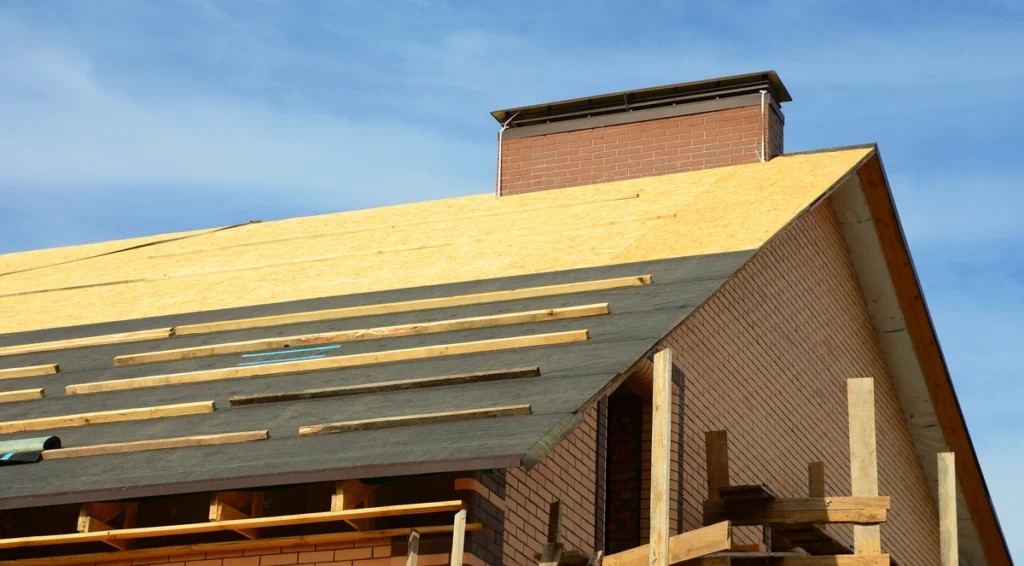
Roof sheathing material can easily break down if not taken good care of. Here are some of the ways to ensure it stays in good shape.
Regular Inspections
Conduct regular inspections of your roof and attic to identify any signs of damage or wear. Look for:
- Water stains or discoloration on the sheathing
- Sagging or warping panels
- Mold or mildew growth
Prompt Repairs
Address any issues promptly to prevent further damage. If you notice any signs of water damage or structural issues, contact a professional roofer for a thorough inspection and repair.
Proper Ventilation
Ensure your attic and roof have adequate ventilation to prevent moisture buildup and heat retention. Install vents and keep them clear of debris to allow for proper airflow.
Clean Gutters and Downspouts
Keep your gutters and downspouts clean and free of debris to ensure proper drainage. Clogged gutters can cause water to back up onto the roof, leading to moisture damage.
We Protect Your Roof System
Roof sheathing is a crucial component of your home’s roofing system, providing structural support and protection against the elements. If you’re considering a roof replacement or new construction project, consult with one of our professional roofers to determine the best sheathing material for your needs. With the right knowledge and care, your roof sheathing will help protect your home and enhance its longevity.
For more expert advice on home improvement and maintenance, reach out to Johnson Restoration today!
